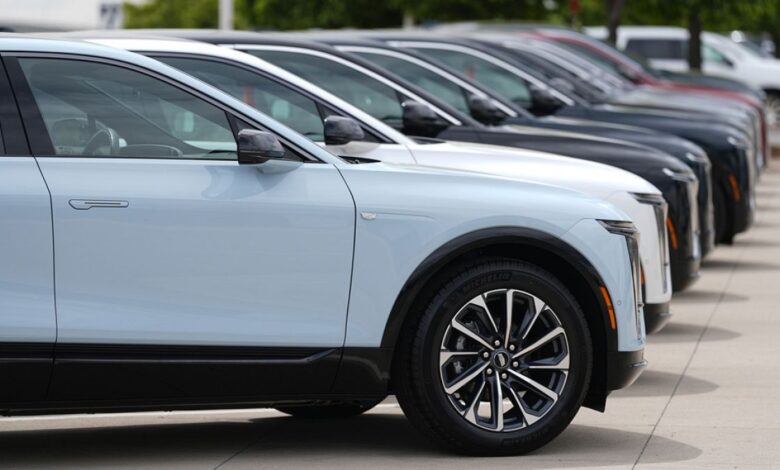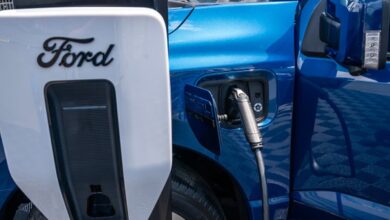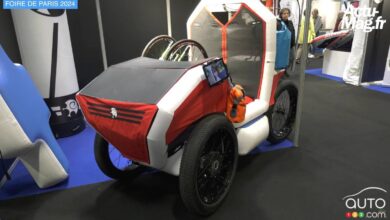Manganese batteries: Could they ever be the main driver in the EVs market?

Lithium batteries are expensive to produce, and can be hard to recycle. There are also claims that mining for lithium is dangerous. Manufacturers are looking at other metals to see what they can offer.
Lithium batteries have revolutionised electric vehicles (EVs) over the past few years. They are also used in other products, including cellphones, vaping devices, solar power backup storage, electric toothbrushes, tools and laptops.
On average, an electric vehicle battery uses about 8kgs of lithium, but some can use far more. Some of Tesla’s batteries, for example, use about 62.6kgs of lithium.
Lithium batteries can be expensive and difficult to extract, requiring a huge amount of water and heavy-metal intensive technology to produce. Lithium extraction also causes mineral waste, as well as soil erosion and water pollution.
Lithium mining has been heavily associated with unethical practices such as child and forced labour, especially in countries where the metal is abundant, such as the Democratic Republic of Congo (DRC).
Furthermore, they are also difficult to recycle, leading to high annual wastage.
Some companies are now looking towards other alternatives to lithium batteries. This remains challenging, because lithium is still considered vital for the transition to green energy, and investment and exploration of new alternatives is still lacking.
Is manganese a viable alternative to lithium batteries?
Manganese batteries have been attracting attention recently as potential alternatives to lithium batteries. Usually, cobalt, nickel and lithium are the most in-demand metals for EV batteries but manganese is also useful.
It is a cathode material in EVs, designed to increase their safety aspect, energy density and cost effectiveness. An average EV battery consists of about 20 kgs of manganese, as well as 14 kgs of cobalt.
Manganese is cheaper to mine than lithium and there is much more of it available. With cobalt mining being embroiled in several human rights issues, and most nickel mined being unsuitable for use in electric vehicles, there is a growing interest for manganese in batteries.
Martin Kepman, the chief executive officer (CEO) of Canadian manganese mining company Manganese X Energy Corp, said in an interview: “Manganese is a candidate for disruption in the lithium-ion battery space. It has elemental qualities that have the potential to improve density, capacity, rechargeability, safety and battery longevity. The timing for establishing a North American manganese resource could not be better.
“With the global push for greener technology and lessening the carbon footprint, Manganese X is poised for leadership in providing a domestic supply of manganese for the rechargeable battery industry, everything from the small consumer batteries in electronic devices, smartphones and energy storage power reserves, to the EV and hybrid electric vehicle industry.”
Tesla and Volkswagen are two of the most prominent companies exploring the use of manganese batteries at the moment, with Elon Musk recently having gone on record to say that manganese batteries have “potential” to drive the global transition.
Usually, manganese is used in combination with lithium in a range of batteries such as lithium manganese oxide (LMO) batteries, lithium iron manganese phosphate batteries (LiFeMnPO4) and lithium manganese spinels, which is a cathode.
Nickel manganese cobalt oxide (NMC) batteries are also popular at the moment. According to the International Energy Agency (IEA), NMC batteries accounted for 60% of the market share in 2022, with lithium iron phosphate (LFP)n batteries accounted for almost 30% and nickel cobalt aluminium oxide (NCA) batteries approximately 8%.
However, although higher manganese usage can be a good option for cutting the need for nickel or cobalt in lithium batteries, most manganese is still currently used in tandem with lithium for EVs. So more research and development might be needed before manganese could be the dominant metal in EV batteries.
Some other alternatives to lithium batteries
One of the other rising alternatives to lithium batteries is the sodium-ion battery. These are energy-efficient, fast-charging and stable in extreme temperatures thus offering strong protection against overheating.
In addition, they are also considerably less toxic than other battery options, as they do not include copper, lithium, cobalt or nickel, which can cause pollution in the extraction process and may be potential fire hazards.
These batteries, however, do not store as much energy as lithium ones, meaning they might not be suitable for wide-scale adoption. Also, as sodium-ion batteries are still a relatively new battery technology, their supply chain and availability is not as developed as lithium.
Zinc-based batteries, or zinc-ion batteries is another battery technology that has seen more interest lately. It is considered more environmentally-friendly than lithium, and there is a lot of it, making it cheaper and easier to mine.
Zinc-based batteries are low maintenance and do not need to be watched constantly for safety and performance issues. They have a wide operating temperature and low power output, making them ideal choices for low power applications such as flashlights and remote controls. However, zinc batteries are medium density, compared to lithium ones, meaning they may not be able to store as much energy.
Another alternative to lithium batteries is solid-state batteries, which are much more compact, powerful and sustainable, especially for electric vehicles. Not only that, but solid-state batteries are smaller and lighter than lithium ones. They are also safer, with a higher capacity and range and lower carbon footprint.
They have faster recharging capacities, and can be recharged in 10 to 15 minutes, against a time from of between 20 minutes to 12 hours for lithium batteries. However, the disadvantage is that solid state batteries are more expensive to produce and supply chains still being developed.



